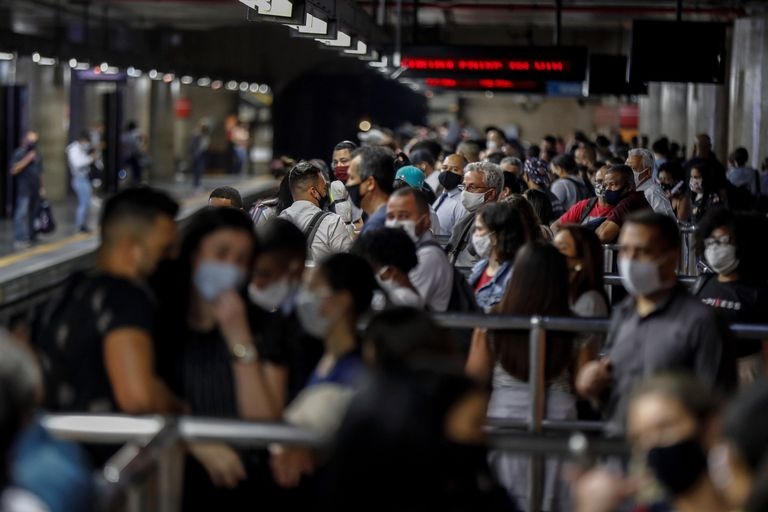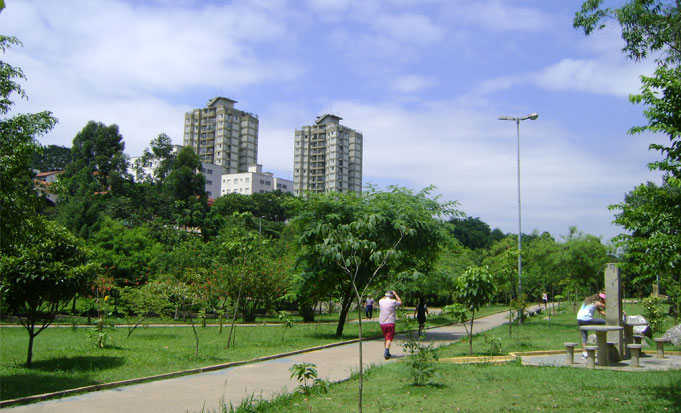RIO DE JANEIRO, BRAZIL – The average daily death rate of Covid-19 decreased in four out of five São Paulo districts between late August and late September. There was a deceleration in the death rate in 79 out of 96 municipal districtsç the rate increased in 16 and remained stable in only one. The survey was conducted by Estadão news outlet based on detailed City Hall bulletins released on August 3rd and 31st and September 24th.
The positive highlight is that there have been no deaths in three neighborhoods so far in September: Vila Leopoldina (west zone), Marsilac (south zone), and Pari (center). On the other hand, in the three with the highest acceleration, two are located in the east zone: Cangaíba, with 72 percent, and São Lucas, 67 percent. The other is Liberdade, in the center, with a 63 percent increase in deaths.
City Hall does not regularly disclose detailed figures by districts. There is a 28-day period between the first and the second bulletins, from August 3rd to 31st, and there is a 24-day interval until the third. As a result, Estadão used daily averages when estimating the variation between August and September.

In overall numbers, Marsilac is the neighborhood with the lowest number of cumulative deaths. In early August, it counted 12 deaths. There were two more fatalities during the month. In September, the district had no Covid victims. It should be noted that in April, Marsilac was the neighborhood with the highest rate of social isolation, at 79 percent, according to data from the São Paulo government’s Intelligent Monitoring System.
Vila Leopoldina rose from 43 to 49 deaths and then managed to reach zero. Pari climbed from 32 to 34 and subsequently, no more deaths were recorded. The Consolação neighborhood had virtually no variation between August and September.
Last in the ranking is Cangaíba, which showed a 72 percent increase in the average number of deaths. The district rose from 200 deaths on August 3rd to 217 on August 31st and leaped to 242 on September 24th. Butantã and Pinheiros, two noble districts, also figure among the worst, with an increase of 56 and 40 percent, respectively.
“The curve is dropping in the whole city of São Paulo. It seems to be decreasing evenly,” says biologist Fernando Reinach, a columnist for Estadão. “But we must always consider the neighborhood’s population. Because in one given location ten deaths may have a huge impact and in another not that much,” he added.
By dividing the number of deaths by the population of each region, the scenario changes completely. Grajaú is the neighborhood with the lowest number of deaths per 100,000 inhabitants (49). Marsilac, a low-population density neighborhood, ranks 13th, with 138 deaths per 100,000 inhabitants. The population of the neighborhood in the capital’s far south is 10,000 inhabitants, compared to 864,000 in Grajaú, the most populous district.
Suzana Pasternak, an urban planner and professor at FAU-USP (School of Architecture and Urban Planning – University of São Paulo), stressed the increase in Covid deaths in the central areas and the decrease in the periphery. In addition to Grajaú, Sapopemba (94), Anhanguera (100), São Rafael (106) and Pedreira (107) are other neighborhoods listed as having the lowest number of deaths per 100,000 inhabitants. Meanwhile, Jardim Paulista (161), Itaim Bibi (174), and Lapa (192) show higher averages.
“One assumption that makes sense is that in the city center, in the well-off areas, the population isolated at first and then relaxed, ceased to do so. One only needs to see the crowded beaches of São Paulo’s coast. That’s why it became more susceptible. In the peripheral areas, the virus spread a few months ago and now it is more stable,” commented the urbanist. Another reason lies in the age bracket of the population living in the wealthier neighborhoods. “In the central areas, the population is older, in the risk group.”
ICU occupation rate
The State reported 985,628 cases and 35,622 deaths by Wednesday. The intensive care (ICU) bed occupancy rate has been dropping for ten consecutive weeks. In Greater São Paulo, the rate stands at 42.5 percent and the São Paulo State Health Department has decided to begin using intensive care beds to treat other diseases.
Upward trend
Marked by traditional leisure spots in the eastern part of the city, such as the Tietê Ecological Park and the Tiquatira Linear Park, the Cangaíba district is still experiencing difficult times and presents an upward trend in deaths from the novel coronavirus. One of the most recent victims in the region was social worker Ana Cordeiro Santos, 66. After her son and husband became infected, but only with mild symptoms, she needed to be hospitalized in one of the Prevent Senior Hospital units. On September 21st, the resident, who was very well-known in the region, passed away.

Ana worked for 27 years at the Bom Jesus de Cangaíba Social Center, a partner organization of the São Paulo City Hall. The center features ten different facilities focused on social assistance services. Among its activities are interaction with the elderly, leisure, entertainment, and meals for about 200 children. This means that Covid killed those who helped other people in the pandemic. “It was a huge blow. It happened when we were getting ready to restart in-person activities,” says the Center’s manager Maria de Fátima Feitosa, who worked with Ana for three decades.
In the neighborhood, the pandemic also exposes the population’s social and economic needs. Crammed between the large city of Guarulhos and the populous districts of Penha, Ponte Rasa, and Ermelino Matarazzo, Cangaíba is a deprived area. Of the thousand families registered with the Social Assistance Family Service (SASF), a body linked to the municipality to operate in regions with high vulnerability rates, 600 are in extreme poverty. They rely on the municipal government and donations to eat, for instance.
The neighborhood displays several factors that explain the impact of the pandemic. The main one is the lack of housing. Hundreds of people who lost their jobs in the pandemic increased the irregular occupation of Vila Sonia favela. There are almost 800 families there. In small houses, with tiny rooms, isolating is more difficult. There is also a greater risk of everyone getting sick together when a resident becomes infected with the virus. “There is not enough room,” says Maria Gleide Lima Rocha, the SASF’s local manager.
No victims
Vila Leopoldina, in the west zone, is at the other end of the death statistics for Covid-19 as compared to the Cangaíba neighborhood. The community’s mobilization was decisive for the drop in indicators, based on practical actions. In April, the social isolation rate reached a low level of 42 percent.
However, the residents decided to closely monitor suspected Covid cases with the help of the region’s Basic Health Units, through the managing council. The goal was to ease and expedite the social isolation of positive cases.
The Leopoldina Solidária Network, a combination of associations, schools, non-governmental organizations, companies, and residents, helped to create a clinic managed by the Beneficência Portuguesa Hospital, which was established within the community Residents Association of Linha Nova Cingapura, which is located next to CEAGESP (São Paulo Wholesale Food Warehouses). The goal was to attend Covid cases, in addition to the health unit.
Support for the Zancone Shelter Center, located in the region and run by the municipal government, was yet another priority. Masks and aprons produced by sewers from the neighborhood were donated in an attempt to protect the vulnerable population.
The idea of offering soap and water in the squares and public places to help people living on the streets was born there. “People were very supportive. They wanted to help. Moreover, we achieved a quick mobilization. It was nice. Although they were tired of isolation, people donated and provided help,” says Alexandra Swerts Leandro, 47, one of the local network’s liaison staff.
Contrast
According to the experts, the differences between neighborhoods reflect the social issues. “The pandemic has opened up and exposed inequality in cities around the world as the most undesirable and destructive by-product of the development, building and consumption model of cities,” says architect Valter Caldana, professor of architecture and urban planning at Mackenzie University.
Source: O Estado de S. Paulo

